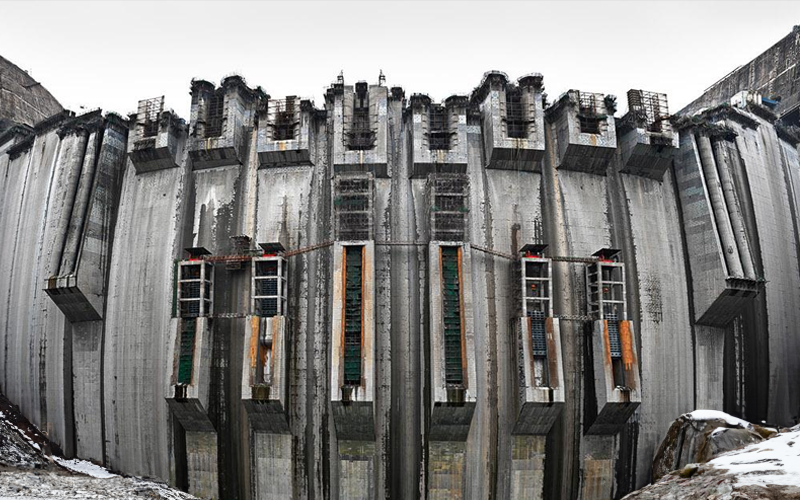
Massive toroidal structures sit at each of Europa’s still-frozen poles. Within the outer shell of each torus, a rotating ring intercepts and redirects a portion of Jupiter’s magnetosphere to protect the moon from radiation and maintain its thin atmosphere. At the center, a long, hollow spike pierces through the moon’s crust and into the mantle, providing the controllers with a consistent source of geothermal power.
Since the decline of the ark station, both controllers have been running exclusively on automated procedures decades beyond their maintenance schedule. The slow breakdown of the controllers introduces instability into the moon’s artificial magnetosphere, making long-term inhabitation of the inner hemisphere inadvisable due to the limited protection from Jovian radiation. Additionally, while vibrant aurorae used to be limited to the area around the controllers, they have now propagated across the skies of the entire moon.
Construction
Because stabilization of the atmosphere gated colonization of Europa, the structural components of the controllers were constructed aboard the station during transit, allowing them to be installed shortly after arrival. The massive scale of the controllers and relative inaccessibility of their final location meant they were assembled in orbit, then “landed” in position on the surface. After landing, the controllers were spun up in rough synchronization, as one running without the other would wreak havoc.
Maintenance
The controllers are largely analog and automated. The majority of their structure isn’t accessible, though they each have several control towers intersecting the torus to facilitate monitoring and maintenance. The control towers are able to access the sliver of the inner ring currently aligned with them, but provide limited information about the system because the intense magnetic disturbances generated as a side effect of the controllers knock out electronic equipment, meaning failures must be diagnosed by a technician in person. If a maintenance effort will take longer than the access period of a control tower, a work team boards the inner ring and remains on it until the work is finished. These operations must be meticulously prepared for, since the work team will be completely isolated in the darkness of the mechanism until they reach the next control tower.
These magnetic disturbances also mean that communications can’t be sent into or out of the controllers or their surrounding area, and that shuttles must either be piloted into a control tower completely manually or drop technicians miles away to hike in through the frozen tundra.